If you are going on a trip soon and want to know what to see in Granada, take note, these are the 10 best rated places in Granada.
The city is small but infinite for the visitor. You can wander around the Albaicín for a whole day without repeating a single street. Here you can discover fountains, sculptures, palaces, Andalusian houses, squares, viewpoints, Arab baths, walls and much more. Granada is not only the Alhambra and the Albaicín, further down are the Centre and the Realejo, the Cathedral quarters and the Christian palaces of the old noble families. Furthermore, the museums range from the purely historical to the more experimental, such as the Parque de las Ciencias.
If you are looking for charming places in Granada, truly special and less frequented, follow the link. And if you want to know Granada discover our guided tours.
What you will find here
The Alhambra and the Generalife
The Alhambra is the main attraction of the city. Every year more than 2 million people come from all over the world to visit it. It is the headquarters of the Nasrid sultanate, the dynasty that ruled these territories during the late Middle Ages. Although many see it as a large castle with palaces, in reality it was a Palatine City with its own government, i.e. a complex of palaces, military zone, housing, services, water supply and handicrafts. If you are going to visit it, we recommend that you organise everything well, as tickets are sold out every day.
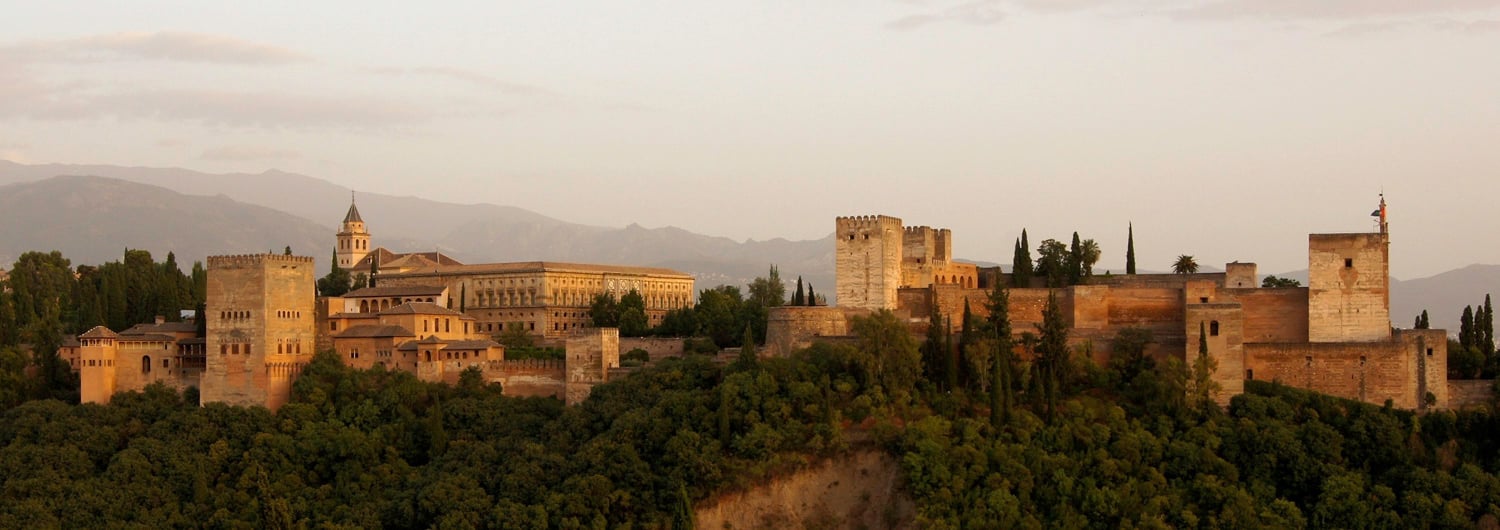
The Alhambra seen from the Albaicín at sunset.
San Nicolás viewpoint
Granada could be defined as a city of viewpoints. Its two hills facing each other allow you to look out at every step and contemplate beautiful landscapes of architecture and mountains. The Mirador de San Nicolás is undoubtedly the most famous, so on your first visit to Granada you must stop there. In general, its sunsets with gypsies singing flamenco, little stalls of artisans and almost full capacity are usually the highlights. However, sunrises are a different story, you won’t get the best photograph because the sun will be facing you, but at least you’ll be able to enjoy it with more peace and quiet.
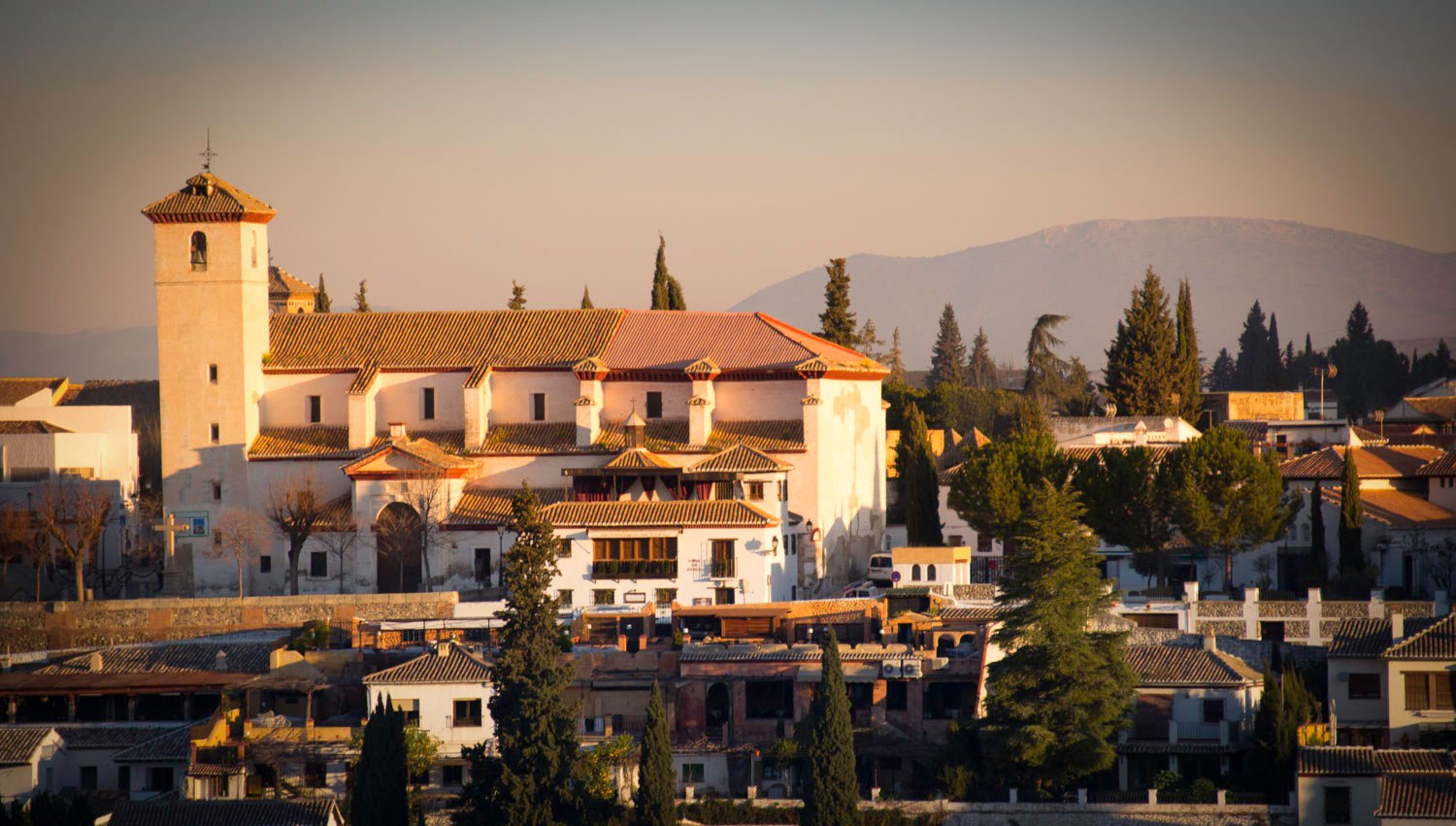
At dawn the first rays of light hit the church and the viewpoint remains solitary.
Cathedral of the Incarnation
A cathedral is always in the top 10 of a city and in Granada it is no less so. The original 16th century project conceived by Diego de Siloé was not completed, as it lacks a bell tower. There is a geodesic point on top of the tower and, until a few decades ago, there were rooms inside where the bell-ringer and some other illustrious personages lived. The spectacular cathedral is somewhat hidden between buildings, but its façade can be seen from Plaza de las Pasiegas, a square opened between the 17th and 18th centuries after the demolition of buildings. Its name, “de las Pasiegas”, undoubtedly pays homage to the women from the Pas region in Cantabria, although the reason for this is still controversial.
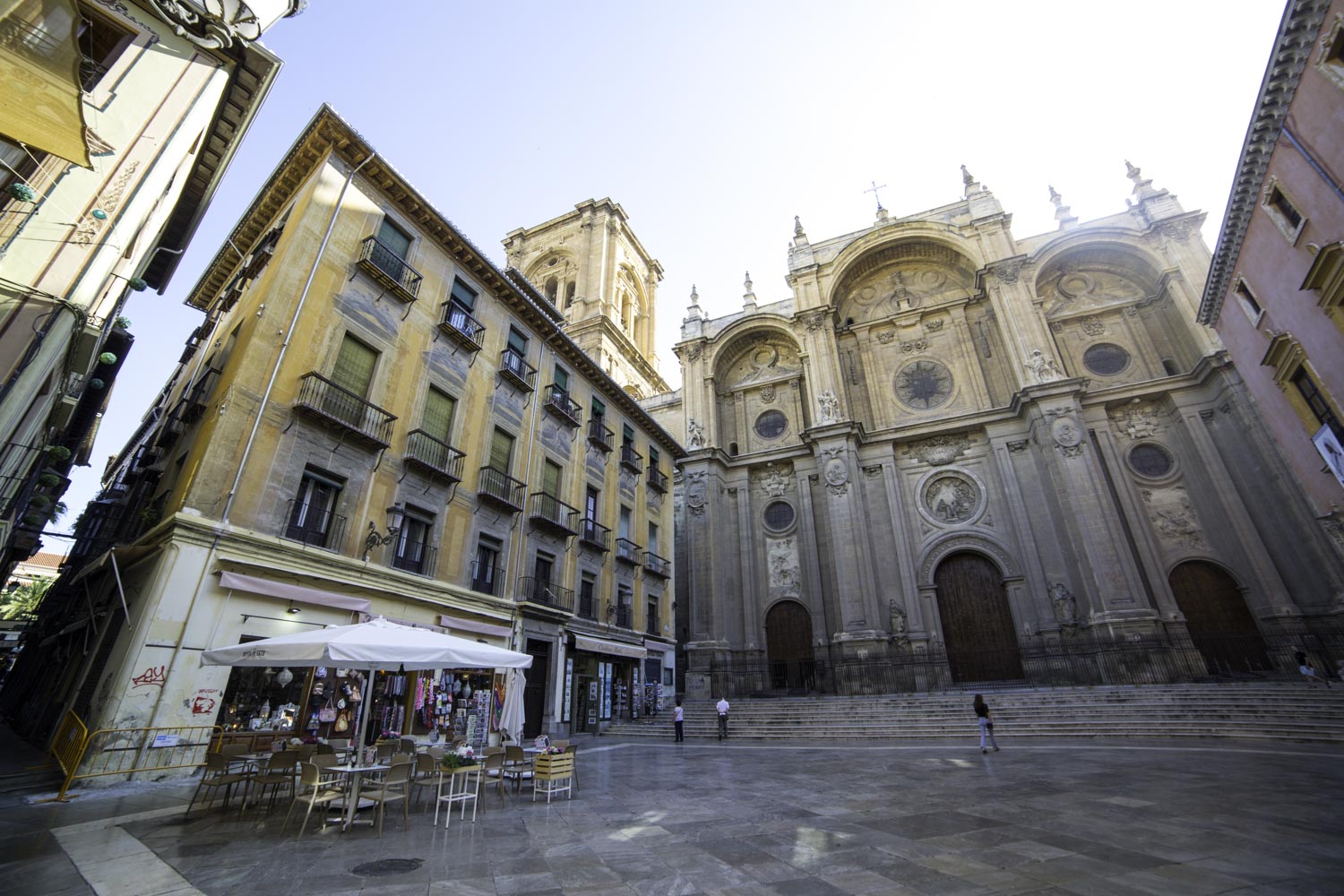
Plaza de las Pasiegas façade of the Cathedral of the Incarnation.
Carrera del Darro
If we have to mention the most strolled street in Granada, it is undoubtedly the Carrera del Darro. It runs alongside the river which gives it its name and which comes from the Roman word Dauro, that is to say, Gold, as not so long ago this metal was sought in its course. This place is the bottom of a valley formed by the Albaicín on the right bank and the Colina de la Sabika on the left. The combination of ancient architecture, water and vegetation is irresistible to almost anyone.
On reaching Plaza Nueva the river disappears underground and the asphalt begins. But it was not always like this. It’s hard to imagine, but the busy square and the adjacent Calle de los Reyes Católicos once had a similar layout to the Carrera del Darro.
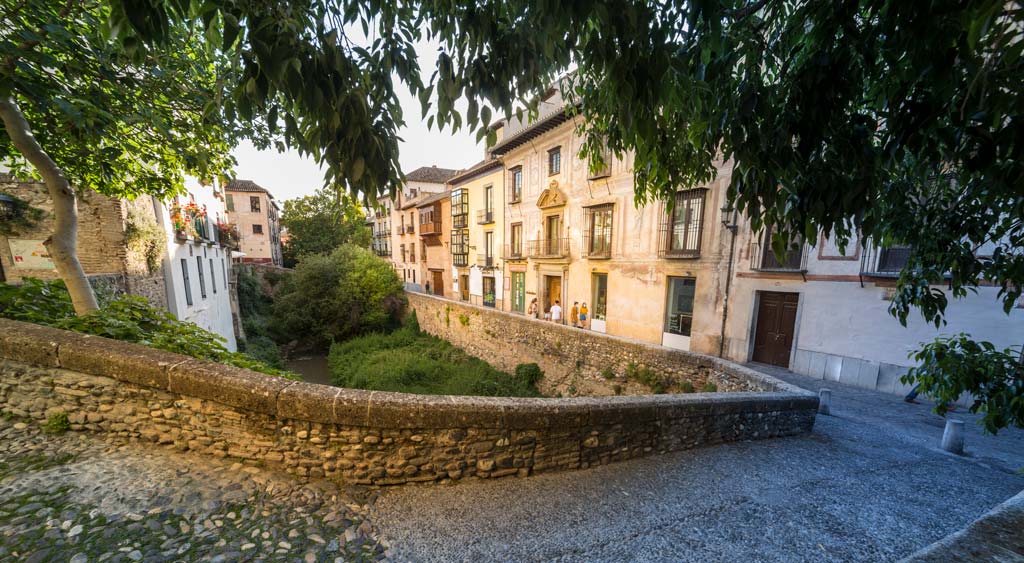
Bridges over the Darro river connect the cobbled road with the Sabika hill (on which the Alhambra stands).
Paseo de los Tristes (Promenade of the Sad)
The now lively Paseo de los Tristes has witnessed some not-so-cheerful moments throughout its history, hence its name. This is where the funeral processions used to pass as they made their way up to the cemetery via the Cuesta de los Chinos (another place to recommend).
This space under the gaze of the Alhambra was conceived in the 16th century and has remained faithful to its original appearance. Over the years, buildings such as the Casa de las Chirimías (17th century) and the Hotel Reuma (20th century) have been added to this cobbled walkway, but they have maintained the historicist style that is so pleasing to the eye of the traveller.
Today it is one of the most beautiful walks in Granada and is much visited by locals and travellers alike.
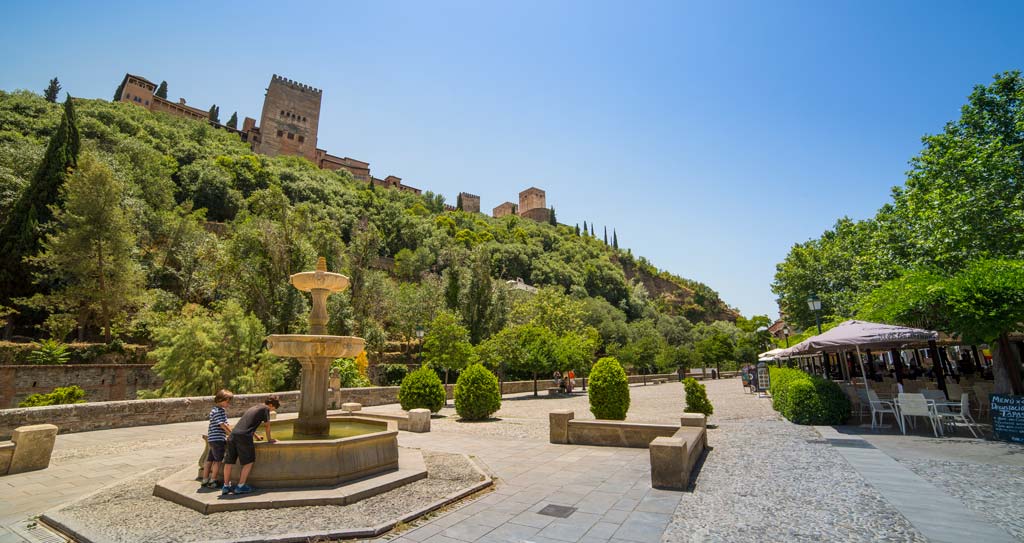
We took this image in summer, when the forest of the Alhambra is bright green.
San Miguel Alto Chapel
Few people miss the small hermitage that crowns the city of Granada. We all go up there to contemplate the spectacular views from the place. From there you can see the city and the Alhambra, the Vega del Genil and all the surrounding mountains (Almijara and Tejeda, Sierra de Huétor, Sierra Nevada and Sierra Elvira). This was a key point in the defence of the capital of the Nasrid Kingdom. From here the Vega of the river Genil was controlled, through which the Christian armies advanced to siege Granada from Santa Fé. It is undoubtedly a lookout into history.
In a great tower the walls that enclosed the city converged in a great tower. Today the hermitage replaces that tower and, behind the church, a pillar called the “Fuente del Aceituno” recalls the name of the watchman of the Vega.
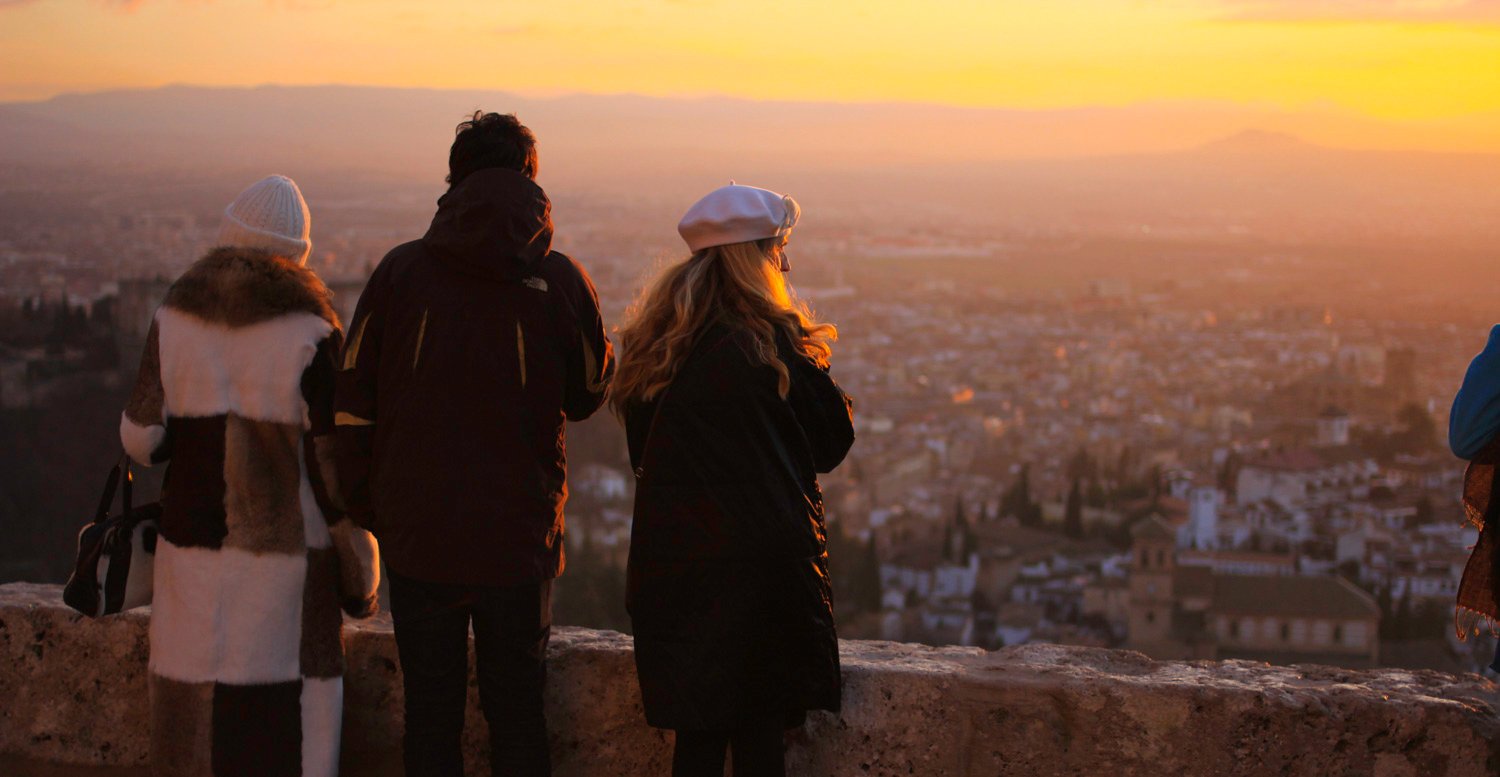
Views from the viewpoint of San Miguel Alto at sunset.
El Bañuelo
It is an Andalusian bath known as Hammam al-Yawza or Bath of the Walnut Tree. Researchers do not agree on its attribution to the 11th or 12th century, but the important thing is that it is preserved in very good condition thanks to its reuse as a dwelling until the 19th century. Arab baths are a far cry from the current idealised vision of the Western world, as they often lack basins for immersion. In addition to their use for personal hygiene, they were a key element of social relations.
After visiting it, there are other interesting places to visit in the surrounding area, such as the Bab al Difaf (or Gate of the Tableros), the Andalusian House of Zafra and one day the Maristan or Nasrid hospital. A few years ago access to the Bañuelo was free, now it is part of an entrance called the Golden Double which gives access to several Andalusian monuments.
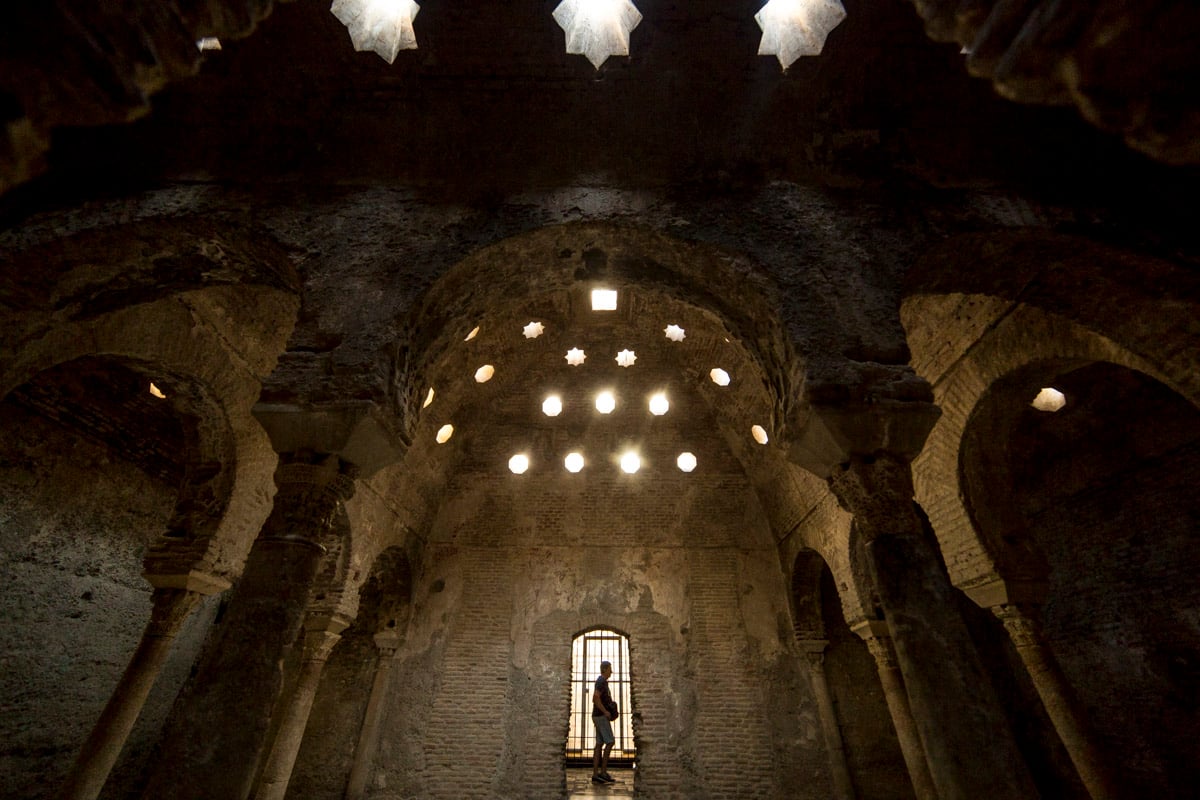
The Andalusian hammam called the Bañuelo.
Casa de los Pisa (House of the Pisa family)
The Casa de los Pisa is nowadays the Archivo y Museo San Juan de Dios. The mansion dates from the end of the 15th century and belonged to the Pisa and Osorio family, the family that welcomed Saint John of God. This saint of Portuguese origin found spirituality in Granada, where he founded the Hospitaller Order of Saint John of God. From then on he dedicated his life to the most needy, developing methods of personalised care that were pioneering in his time.
The Pisa family disappeared in the 19th century and the building was bought by the Hospitaller Order in 1927. Since 1930 it has been a museum and archive of the order and a place for research into the history of nursing and medicine. Its director, Francisco Benavides, tells us that even back then Granada was referred to as a very visited city, so the original museum from the 1930s has been frequented for decades.
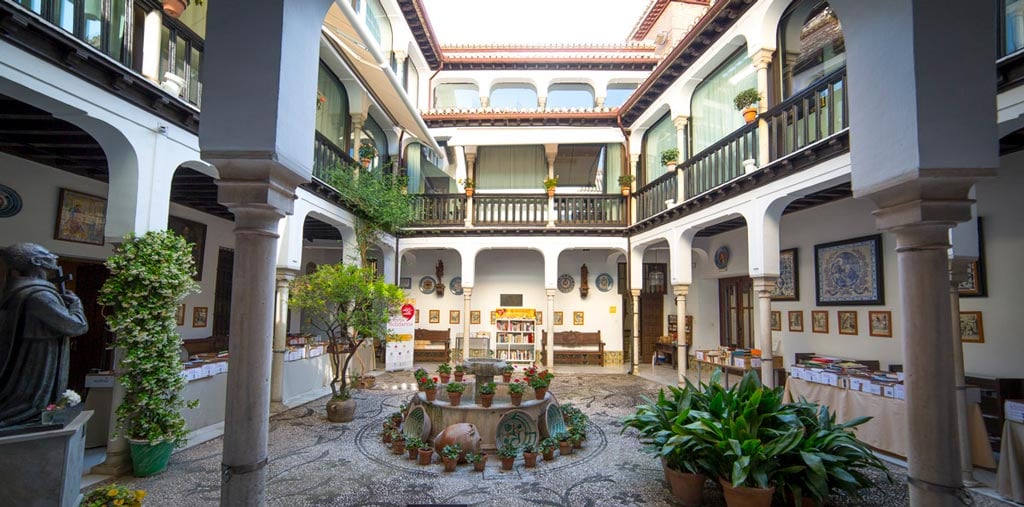
Main patio of the house of the Pisa family. A cool place full of Christian art.
Plaza Nueva (New Square)
This is the centre of tourism in Granada, but also of justice from the 16th century to the present day. Travellers and artists converge in this square in search of a smile and a donation. It is also common to be assaulted with a multitude of tourist offers and you will always find a taxi available. Despite the hustle and bustle of tourists, this bustling square retains a monumental character defined in the 16th century when the Darro River was buried. Since then it has been the scene of all kinds of games, tournaments and festivities, including bullfights. It is flanked to the east by the Church of Santa Ana with its Mudejar coffered ceilings; to the north by the imposing 16th-century Chancillería and seat of the High Court of Justice; to the south by the current Law Courts and the start of the cuesta de Gomérez leading to the Alhambra.
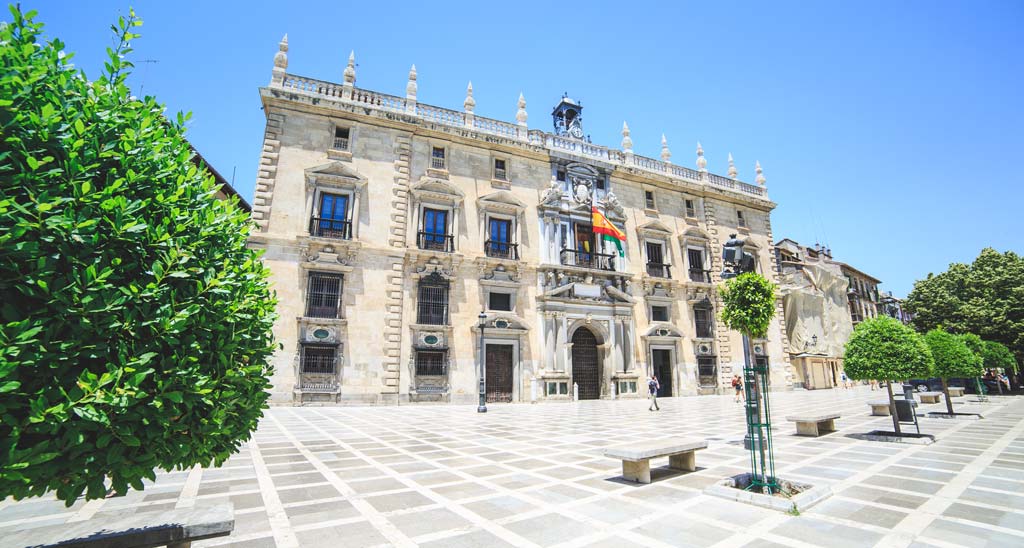
Mannerist façade of the Royal Chancery which replaced the original one at the end of the 16th century. The square is usually full of people.
Sacromonte Abbey
And at the end of the list is a little-visited place in Granada. The Abbey of Sacromonte was built in honour of the supposed remains of the martyr San Cecilio, patron saint of Granada, which were found there. And we say supposedly because behind all this there is an enigmatic history between Muslims and Christians fighting for their faith, which to this day is not clear to everyone. If you want to read more about it, google “Granada plumbeous books” and immerse yourself in a sea of legends. Although its reviews are few, they are always very positive, because whoever goes there is not disappointed with the wonderful views of the Darro valley and the Alhambra. It is a place of peace and serenity, where you can stop to rest and listen to the sounds of the nearby Sacromonte.
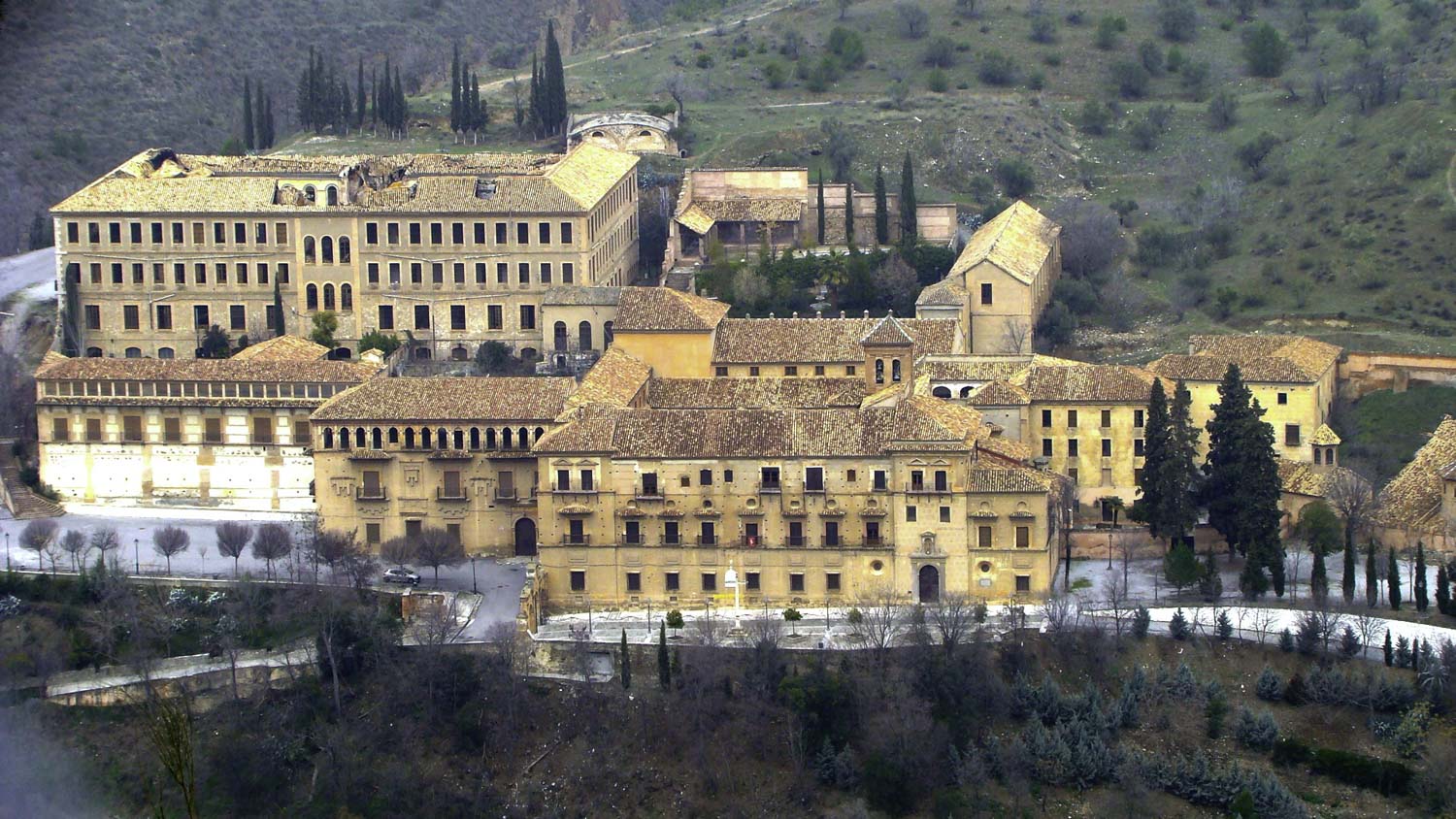
Sacromonte Abbey from the plain of La Perdíz.
Many of these places we visit in 4 neighbourhoods 4 Cultures, do you feel like it?
Click on the banner for more information
MAP OF WHAT TO SEE IN GRANADA
On the map we show you the location of the places to see in Granada described in this post.

